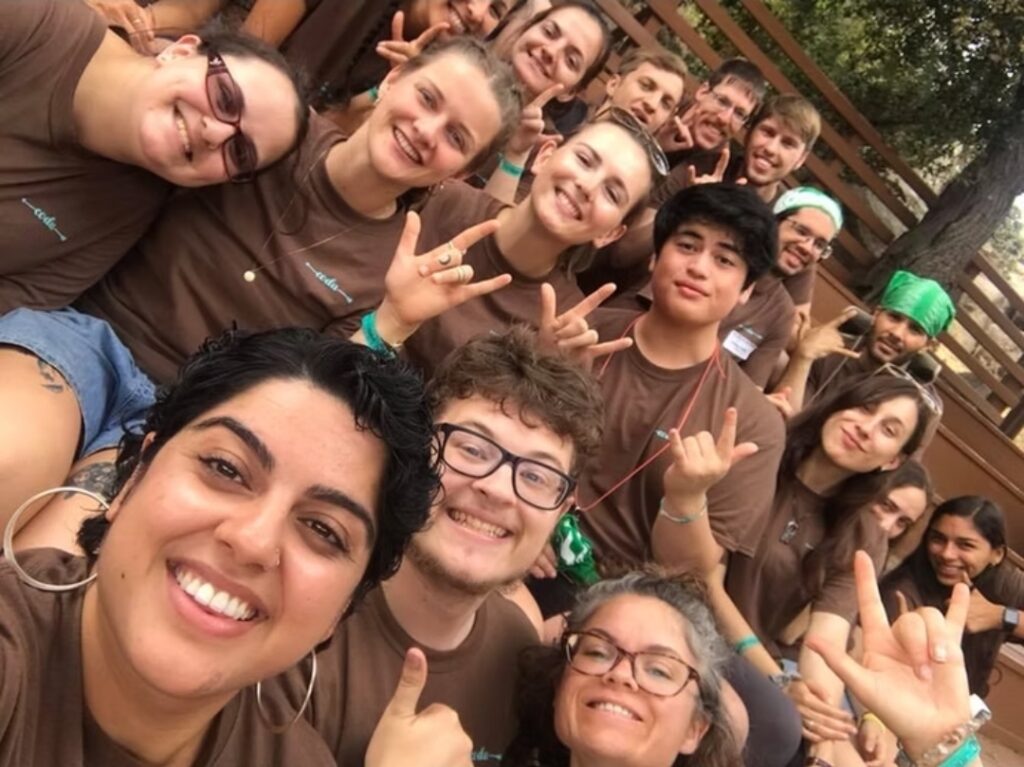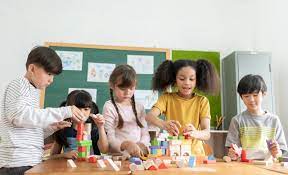
Children of Deaf Adults attending the KODAWest summer camp.
Courtesy: KODAWest
Three decades ago, I was flagged as needing special education services because I had a Deaf parent.
The teachers found gaps in my academic and linguistic development. I received those services for six years until a school speech pathologist noted that my language and speech delays were because of a language difference — American Sign Language, or ASL, was my first language — and not a language disorder.
Not recognizing earlier that special education services were not what I needed was a waste of resources, not to mention unhelpful to my progress as a student. What I needed was support as an English learner; instead, I had to sink or swim as I figured out school on my own.
The same is true of my student Ryan, a third-grader, and a CODA — a child of Deaf adults. Ryan and I are both bilingual; we learned American Sign Language as our first language and English as our second. There are significant language differences between ASL and English. ASL has its own grammar and syntax and is wholly separate from English. However, children who learn American Sign Language as their first language are not classified as English learners. This is why Ryan is identified as a special education student, not an English learner, just as I was 30 years ago.
Just like my teachers, Ryan’s teachers worried that he might have a learning disability. Ryan was not assessed in sign language when evaluated for special education services, so he was placed in a special day class. He was identified as having a specific learning disability, a language disorder and articulation errors.
Just as I didn’t need special education services, neither does Ryan. If ASL were considered a language separate from English, Ryan would be an English learner. As such, he would have access to language support in the general education setting. He would not be placed in a special education class or lose valuable time learning with his peers while he receives services from a speech language pathologist.
General education classrooms are designed to support English language development, which children like Ryan also need. Receiving language support means getting help with learning a second language by sounding out letters and words, understanding the phonics behind them, syntax and vocabulary, and building connections between English and American Sign Language so that students can grow their vocabulary in both languages.
Identifying Ryan as an English learner would also have preserved his multiculturalism by celebrating his cultural and linguistic differences. English learner programs are designed to incorporate students’ native languages and cultural backgrounds into the learning process. At their best, these programs validate heritage and provide an inclusive environment, empowering students to share their unique perspectives and helping them feel like they belong in our classrooms. This is what Ryan needs.
I struggled with my identity for a long time, and sometimes, I still do. It took me several years to catch up to my peers academically and linguistically, and all the while, I didn’t understand why learning was so hard for me. I certainly didn’t think of myself as bilingual. My mother could not help me with phonics or reading in spoken language, so my homework took me hours to complete. Often, I used my lunchtime to sit with teachers to help me with projects, and I would go to friends’ houses after school, so their parents would help me with my work. It shouldn’t have been this difficult, but it was.
Children of Deaf adults deserve to be successful in their education and should have help learning English alongside their bilingual peers who use spoken languages. Although my experience is 30 years older than Ryan’s, it is eerily similar.
Change is needed, and the time is now, because every student deserves to succeed.
•••
Olivia Chavez-Hart, Ed.D., is an itinerant teacher of the Deaf and hard of hearing and an induction coach in the San Bernardino City Unified School District in San Bernardino. She is a 2024-25 Teach Plus California Senior Policy Fellow.
The opinions expressed in this commentary represent those of the author. EdSource welcomes commentaries representing diverse points of view. If you would like to submit a commentary, please review our guidelines and contact us.


